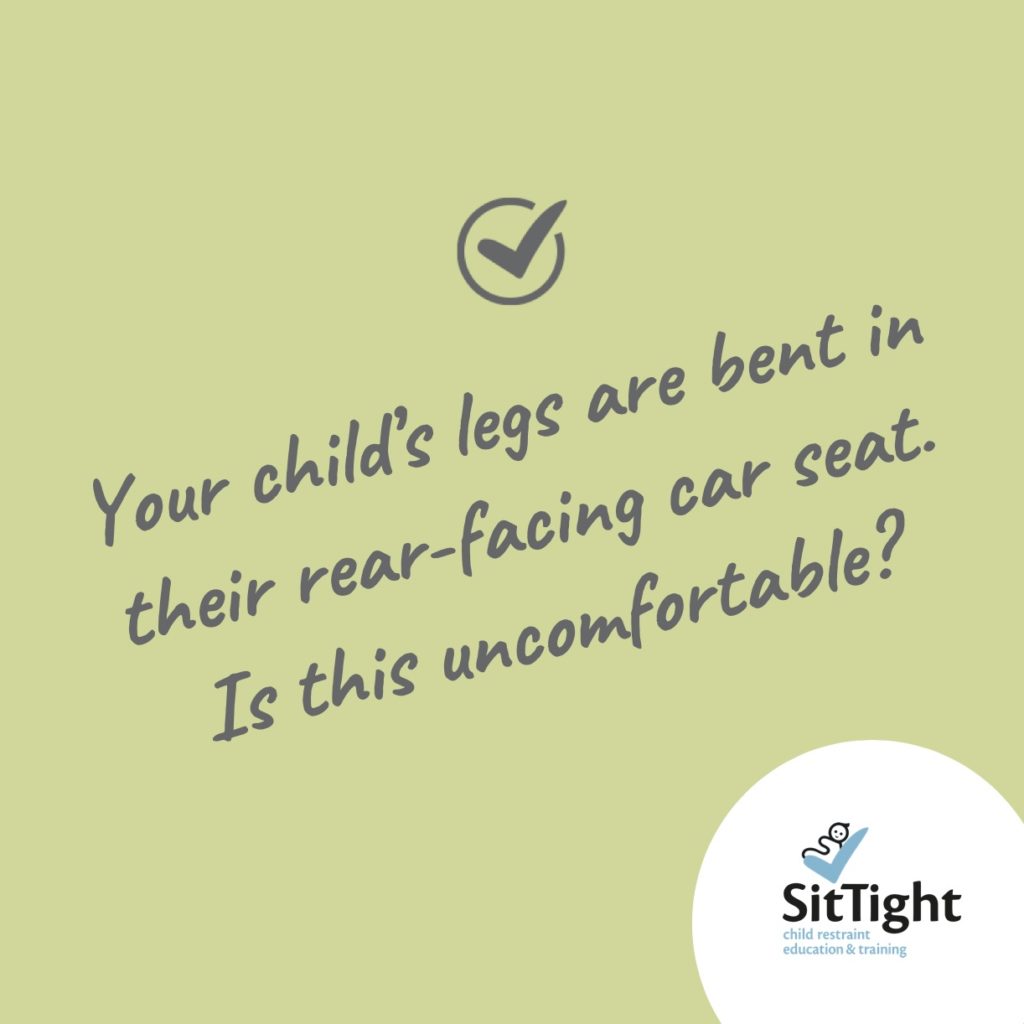
As a child gets older and their legs get longer, they need to bend their legs to continue to fit in a rear-facing seat. As a result, the following is a common question from parents, “Is my child uncomfortable having to bend their legs in a rear-facing seat?”
Put simply, the answer is, no.
It is unlikely that a child is uncomfortable when bending their legs in their rear-facing seat, but let’s look into this further.
Why Rear-Facing?
First, let’s remember why a child is in a rear-facing position.
We have children travel rear-facing to provide vital support to their head, neck and spine in a crash. They do not get this essential support when they are forward-facing. Injuries sustained to these areas can have severe and long-lasting consequences so protecting them must be a priority.
Is a Child Uncomfortable with Bent Legs?
When we see a child sitting in a rear-facing seat with their legs bent for a period of time, as adults we consider what that would feel like for us. It may well be uncomfortable for an adult to sit in that position for a while, but children are not small adults. Their bone structure and joints are different and they are far more flexible than we are. They will not feel the same effects as an adult would when sitting in that position.
Some children rear-face until they are 5-6 years old. At this age, they are able to communicate if they are uncomfortable, and this is very rarely the case.
Have they outgrown the restraint?
Another common assumption made when seeing a child with bent legs in a rear-facing restraint is that they have outgrown the restraint. This is not correct.
Never use the position of a child’s feet to determine if they have outgrown a rear-facing restraint or not. There are 5 things to consider before deciding if a child has reached a restraint’s limits and the position of their feet is not one of them.
To check if a child has outgrown a rear-facing restraint you will need to look at their weight, their overall height, their age, the position of their shoulders in relation to the harness and the position of their head in relation to the child restraint’s shell. Once you have this information, read the instruction manual of your particular restraint as it will give you the rules you have to follow. Some restraint’s manuals may not mention age, in which case this isn’t relevant. Some manuals may not mention height and again, in this case, this isn’t relevant.
The information you need to determine whether your child has outgrown a restraint is often dictated by the safety standard that the restraint is manufactured to.
Is this a reason to forward face a child?
If an adult assumes a child is experiencing discomfit from bending their legs and wants to reposition them to remove the risk of discomfit, the only way to do so would be to put the child in a forward-facing child restraint. This would give them the space to stretch their legs. However, by doing this we remove a perceived risk of discomfort to their legs but replace it with a proven risk of severe head, neck and spine injuries.
It doesn’t make sense to do this, especially when it is unlikely they are uncomfortable in the first place.
Adults assuming children are uncomfortable in this position is one of the most common reasons why children are turned to face forwards much earlier than they should. It is much safer for a child to travel in a rear-facing position until they are at least 2 years old, but ideally until they have outgrown the rear-facing limits of a seat. This may allow them to rear-face well past 2 years old, and this is best practice.
Do you need help to check if your child still fits their restraint?
Always make contact with us at SitTight if you have any questions about car seat use or, if you would like to have someone check or install your child restraint, contact your local child restraint technician. And don’t forget to follow us on Facebook or Instagram.